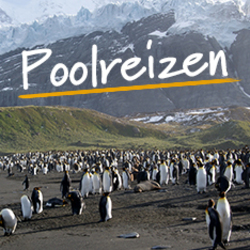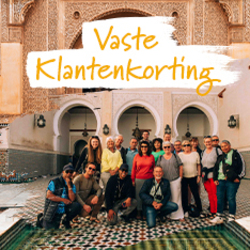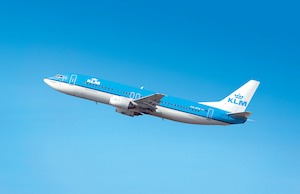Activities
- Culture
- Cultural Wonders
- — Journey through Ancient Greece, visiting some of the best archaeological sites in the world — Explore the extraordinary temples and monuments of the Acropolis in Athens — Marvel at the mountain-wrapped ruins of Delphi — Visit Olympia and walk (or run!) in the footsteps of the first Olympic athletes — Discover the well-preserved monuments of Messene at the foot of Mount Ithomi
- Culture Bestsellers
Food
Activities
-
1
Start Athens
Our adventure begins in Athens, an ancient capital soaked in myth and legend. Depending on when you land, you may have time to explore a little or perhaps dive into a taverna to sink your teeth into the much-loved local cuisine. Either way, gather at the hotel for a welcoming briefing in the evening when we meet as a group for the first time. Alternatively, if you'd like more time in this incredible city, speak to us about booking hotel nights before the adventure begins. Accommodation: Arion Hotel or Achilleas Hotel (or similar)
-
2
Morning walking tour of Athens, including the Acropolis, Acropolis Museum and Plaka; afternoon free to explore Athens
Embark on a walking tour of Athens this morning, taking in the Acropolis ruins and artefact-filled Acropolis Museum. This walk is a journey through the history of the city, from the classical world ruled by the Olympian deities to the 21st century. The afternoon is free for you to explore Athens on your own. Your leader can suggest where to visit. Please note: During busy periods, the walking tour might take place in the afternoon when it is quieter and the morning will be free. Accommodation: Arion Hotel or Achilleas Hotel (or similar)
-
3
To Nafplio, visiting Ancient Corinth and Mycenae en route
Head to Nafplio after breakfast. On the way, stop at the Corinth Canal, which separates the Peloponnese from mainland Greece and connects the Gulf of Corinth with the Aegean Sea. We then visit the archaeological site of Corinth, one of the major cities in antiquity and an important centre of trade. Extended excavations here have revealed a Roman forum, temples, fountains and various other monuments. Then continue to the archaeological site of Mycenae, the kingdom of Agamemnon, who led the Greeks in the Trojan war, and the most important and richest palatial centre of the Late Bronze Age in Greece. Mycenae comprises a fortified acropolis and surrounding funerary and habitation sites. We then head to the picturesque town of Nafplio, where we spend the night. Accommodation: Rex Hotel (or similar)
-
4
Visit the Acropolis of Ancient Tiryns, then Ancient Epidaurus
Explore two World Heritage sites today: Ancient Tyrinth, near Nafplio, then Ancient Epidaurus. In the morning, head to the small town of Tyrintha (just 10 minutes from Nafplio) to visit the Mycenaean acropolis of Ancient Tiryns with walls that, according to legend, were built by the Cyclops. We then head to Ancient Epidaurus (approximately a 45-minute drive from Nafplio), home to the Sanctuary of Asclepius, the most famous healing centre of the Greek and Roman world. We also visit the Ancient Theatre of Epidaurus, the finest and most renowned of its kind, which perfectly combines acoustics with elegance and symmetrical proportions. Return to Nafplio for a delightful evening walk in the beautiful alleys of the old town. Accommodation: Rex Hotel (or similar)
-
5
Morning visit to the Fortress of Palamidi; explore Mystras
Enjoy one more exploration of Nafplio with a morning visit to the hilltop Fortress of Palamidi, which stands guard over the town. It was initially fortified by the Venetians during the second Venetian occupation of the area (1686-1715). In 1715, it was captured by the Turks and remained under their control until 1822, when it was liberated by the Greeks. The most important monuments of the site are the castle, the Church of St Andrew, and the prison of Kolokotronis, a hero of the Greek Revolution. We then transfer (approximately two hours) to Mystras, the most famous medieval town in Greece. Occupying a steep foothill on the northern slopes of Mount Taygetos, the Frankish castle here was one of the first to be liberated during the War of Independence. Explore the site on foot, including several beautiful Byzantine churches, most built between the 12th and 15th centuries, the palaces of the Mystras despots, and some urban buildings. Unfortunately, the castle itself is closed for reconstruction so we are unable to go inside. Accommodation: Byzantion Hotel (or similar)
-
6
Depart for Pylos, visiting Ancient Messene en route. Visit the Castle of Pylos
Head to Ancient Messene after breakfast, one of the finest and best restored, yet still relatively unknown, archaeological sites in Greece. Lying in a fertile valley below Mount Ithomi, the site was first inhabited during the Late Neolithic or early Bronze age. We visit the ancient theatre, the agora, and the Asclepeion. The stadium and the gymnasium are among the most impressive and well restored complexes in Ancient Messene. We then drive to the seaside town of Pylos, where we check into our hotel. Visit the Castle of Pylos in the afternoon, which hosts a fine exhibition and museum of underwater antiquities. Here we learn about underwater archaeology in Greece; how research, excavations, and preservation of the antiquities take place. Also see contents from shipwrecks found in the sea near the Peloponnese and Ionian islands. Accommodation: Hotel Karalis (or similar)
-
7
Visit the Mycenaean Palace of Nestor; explore Ancient Olympia, the site of the first Olympic Games
Drive to the Mycenaean Palace of Nestor after breakfast, which lies 11mi (17km) north of Pylos. It’s described in Homer’s Odyssey as the court of the hero Nestor, who took part in the voyage of the Argonauts and sent 90 ships to fight in the Trojan War. From the raised walkways and explanatory text, you get a good idea of the layout of a Mycenaean palace complex. Our next destination is Olympia (approximately a two-hour drive), where we visit Ancient Olympia, the site that hosted the first Olympic Games. Dedicated to Zeus, the father of the gods, at the confluence of two rivers, it was the most important religious and athletic site in Ancient Greece. Our exploration includes the Sanctuary of Zeus and the many buildings around it, such as an athletic premises used for the preparation and celebration of the Olympic Games, administrative buildings, and other lay buildings and monuments. Accommodation: Pelops Hotel (or similar)
-
8
Explore the World Heritage site of Delphi
After breakfast, we drive (approximately 3hr 30min to four hours) to Delphi. En route, we cross from the Peloponnese peninsula to mainland Greece and have the chance to admire the cable-stayed Rio–Antirrio Bridge, an modern masterpiece of architecture Enjoy lunch in one of the local restaurants upon arrival, before we explore the magnificent archaeological site of Delphi on foot, which was considered the place where heaven and earth met in ancient times. According to mythology, it is here two eagles sent by Zeus from the ends of the universe to find the navel of the world met. The Sanctuary of Delphi, on the slopes of Mount Parnassos, was for many centuries the cultural and religious hub and symbol of unity for the Hellenic world. At the archaeological site, we visit the Temple of Apollo, the Treasury of the Athenians and of the Siphnians, the ancient theatre and possibly the stadium. Accommodation: Nidimos Hotel (or similar)
-
9
Easy morning in Delphi; visit Temple of Poseidon in Cape Sounio; airport drop off
You can sleep in a bit longer this morning, as you have a long day ahead! After checking out, we pass by Arachova, a picturesque town on the slopes of Mount Parnassos. Stroll around, purchase local souvenirs or enjoy a drink in one of the numerous cafes. We then depart for Athens (approximately a 2hr 30min drive). Continue to the southernmost tip of the Attica peninsula to Cape Sounio, where you can enjoy lunch. We visit the fifth-century BCE Temple of Poseidon with its magnificent panoramic view of the Aegean Sea (on a clear day you can see at least seven islands). This doric temple was put up during the Golden Age of Pericles during 444-400 BCE, probably by the same architect who designed the Temple of Hephaestus at the Ancient Agora, whose name is unfortunately lost. It was devoted to Poseidon, the Olympian god of the sea; inside the temple stood a 20ft (6m) bronze statue of Poseidon, surviving in parts and preserved in the Archaeological Museum of Athens. Being a seafaring state, Athens had incredible faith in Poseidon and built the temple right near the sea. Along with the Parthenon and the Temple of Aphaea, on nearby Aegina Island, Poseidon’s mighty monument completes the Sacred Triangle of antiquity. After, we transfer (approximately one hour) to Athens International Airport where our adventure ends. Alternatively, speak to us about booking extra nights in the capital after our adventure, giving you a chance to explore this history-soaked city at your own pace.




































